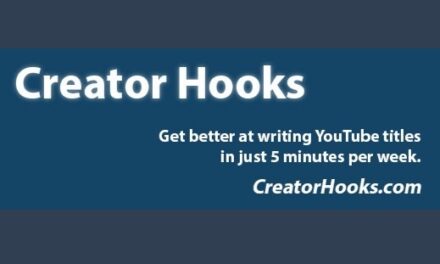Strategy is defined by Merriam-Webster as “a careful plan or method for achieving a particular goal usually over a long period of time.” That’s easy enough to understand: You need a goal, and you need a plan to get there.
When it comes to a content strategy, the goal is often fairly simple to define. You may want to generate more qualified leads, get more press coverage, or whatever it may be. The plan, however, is where things get a little more tricky.
No matter what it is you’re planning, I believe you can only change three variables when it comes to content strategy. And they all start with the letter “C”: content, channels, and contributors.
Let’s take a look at how each C breaks down.
Content
At the core of your content strategy, unsurprisingly, is content. But content can mean so many things. Content can be a video, content can be a blog post, content can be an infographic… Heck, content can be a two-word tweet you immediately regretted posting.
So before you figure out anything, you need to figure out what kind of content your brand wants to create. These are just a few of the main considerations to think about.
- Theme: These are broad topic areas to consider, such as how heavily the content is focused on your product as opposed to the audience’s interests. We use a story matrix to help build out an editorial calendar and ensure that we’re creating a diverse range of content themes.
- Format: Are you publishing articles, videos, infographics, comics, e-books, or whitepapers? Are you gating the content? Is it available for download? One thing to consider here is “divisible content.” For example, you can start with a whitepaper that readers would download. Later, you can turn that content into an easily digestible infographic that you can also share on social.
- Length: A 300-word listicle is very different from a 2,000-word article, even if they’re addressing the same topic. The same goes for video: Are you going short and punchy or longer and more detailed?
- Volume: How often are you publishing? Examine how this impacts engagement, because sometimes less is more.
Channels
No matter how great your content is, it doesn’t matter if it doesn’t get to anyone. Channels are how you make sure all that great content is seen. Distribution is particularly important when you’re first building your audience, though it’s arguably the single most important aspect of your content strategy throughout.
The main channels are:
- Social: This includes all the major players such as Facebook, Twitter, LinkedIn, Instagram, Pinterest, Quora, and so on. Within social you can organically post, or you can pay to promote your posts. We find paid Facebook promotion to be particularly effective. Like all strategy decisions, whether you use social ties back to your overall goals.
- Paid distribution: Paying to promote sponsored content through companies such as Outbrain and Taboola can be an effective way to get a lot of eyeballs on your content.
- Email: Good old-fashioned email still works. In fact, it’s considered one of the most effective distribution methods. Social and paid distribution can help you get initial viewers, but email keeps them engaged.
Contributors
The contributors you select will largely be based on the content types you’re creating. You’ll likely need writers, graphic designers, and videographers. Potential additions can include research analysts, photographers, and podcast producers.
Depending on your budget, these can’t always be different people. More often than not, there will be a few content marketers who wear many of these hats. An editorial calendar is helpful here for planning your budget and managing your many contributors. It’s also helpful to select a handful of big projects that you want to invest significant resources in so that you can find and properly make use of the best contributors for the job.
Test, test, and test again
While three key factors may not seem like much, there are a lot of moving pieces in a content strategy. The key is monitoring the effectiveness of your content based on these factors, then determining what works and what doesn’t.
You may find, for example, that one of your contributors writes hugely popular long-form articles, but her style of writing doesn’t lend itself well to funny blog posts. Or you may find that your videos perform well on Facebook, but your original research is best received through email.
To effectively test this, you have to think back to ninth-grade biology and the scientific method, which says that in order to properly test something, you can only change one variable at a time. Unfortunately, however, content marketing isn’t quite like scientific research in a lab-with the pressure to publish frequently and drive business results, marketers have to be creative.
But when you have some flex room, try testing for specific variables. For example, use Contributor A to write a whitepaper on Topic B and distribute it via email and Facebook. Then use Contributor A to write an article on Topic B and again distribute via email and Facebook. This way you will specifically test the content format. After all, learning from successes and failures is the only way you’ll improve as a marketer. By pulling on the three “C” levers, your testing will be more effective than ever.







